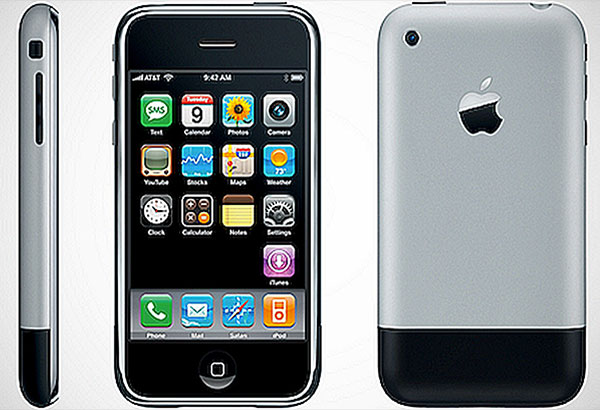10 years of iPhone and the smartphone revolution

Hello, the game has changed: The iPhone has been around for 10 years and it has created a smartphone revolution.
This year marks the 10th anniversary of the Apple iPhone (originally released in the US on June 29, 2007). What followed is a wave of innovation in the mobile space, fierce competition, and the fall of industry giants.
Apple was a nobody in the mobile business then. The closest call it had was the highly successful Apple iPod, which would inspire what would become a revolution in the smartphone business.
Back then, mobile giants such as Nokia and Motorola were killing it, with BlackBerry dominating the corporate and enterprise crowd. Between them, thousands of patents go all the way to the invention of the mobile phone. It was a dominance that seemed impregnable.
Out of the blue and after years of speculation, Apple announced its entry to the smartphone space on January 9, 2007. By June 29 of the same year, it released the very first iPhone.
Two things really made the iPhone a truly disruptive device: first, it introduced a new way of interacting with the phone – a full-touch capacitive display. There were a number of phones in the market with touch display back then but all of them had resistive screens and needed some sort of pointing device or stylus.
The iPhone’s user interface was built to interact with the user’s fingers so it was more responsive and accurate. Apple also introduced multi-finger gestures so the experience was really immersive. The UI was also intuitive that the interaction was natural even a little kid could quickly learn how to use it.
In those times, people heavily relied on physical keys to operate their candy bar phones. A good alphanumeric or qwerty keypad was the trademark of Nokia. The physical keys were so organic that people could actually type without having to look. Yep, it was a skill to be able to send a long SMS even when you’re holding your phone behind your back or under a table.
The second feature that Apple popularized along with the iPhone is the idea of an app store. Apple already had great success with the iTunes store for downloadable music and video so it was only logical to do the same for apps.
The Appstore for the iPhone came a year later (July 10, 2008), a day before the iPhone 3G was released. The Appstore had 500 apps in them, and this was quite a lot back then considering that most smartphone users were not really familiar with the idea of an app.
This made the iPhone a really powerful device with the ability to do so much more than basic calls and text. People got hooked and started paying for apps.
By this time, it was obvious that Apple had redefined the idea of a mobile phone.
Some phone manufacturers resisted and continued with their old ways, thinking that their market dominance would continue to shield them from the revolution that was about to happen.
When the first Android smartphone, the HTC Dream, was announced on Sept. 23, 2008, it solidified the concept of touchscreen phones and app stores. The race had begun and everybody followed suit – HTC, Samsung, Motorola, LG, Sony-Ericsson and many more.
Today, almost all smartphones have full touchscreen displays with the keypad-touting ones being the rare breed. Big names like Nokia and BlackBerry faltered and mobile legends like Motorola have been passed around to different owners.
To date, the Apple App Store boasts of over 2.2 million apps while the Google Play Store has more than 2.7 million apps.
Truly, a lot has changed in the last 10 years.
- Latest





























